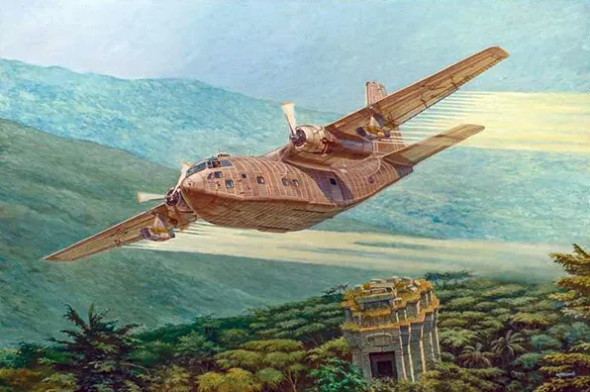Roden
ROD062 - Roden 1/72 HC-123B Provider
- SKU:
- ROD062
- UPC:
- 4823020000000
- Condition:
- New
- Availability:
- In-Stock items usually Ship within the next business day
- Shipping:
- Calculated at Checkout
Description
ROD062 - Roden 1/72 HC-123B Provider
During World War II transport planes played a vital role in the delivery of freight and personnel directly to the field of combat. The majority of them, despite having cargo compartments of some volume, nevertheless couldn't deliver cargo efficiently because of the limitations of the side hatches through which equipment needed to be quickly loaded and unloaded. Just one single aircraft offered a solution, even able to transport light tanks, the German Messerschmitt Me323 Gigant. This giant had clamshell doors in its nose that considerably simplified the loading and unloading process at the airfield, however it was only built in small numbers. The Allies did not have anything comparable, however in the ranks of the British and American air forces were sizeable gliders with hinged noses or rear fuselages. During disembarkation of the armies in Normandy they appeared quite effective weapons, despite their practical limitations. One of the contractors supplying gliders to the U.S. Army was Chase Aircraft, headed by former Russian emigrant Michael Stroukoff.
In 1947, Chase offered the military a new development - an offensive glider, the CG-20. It was completely metal and its undercarriage retracted during flight and moved forward when landing, which had never featured in gliders previously. The design was very successful, and Michael Stroukoff decided that CG-20 should be remade as a motor-glider. After the installation of R-2800-CB-15 engines, the design was renamed the XC-123. The most notable aspect of the conceptual design was the hatch and ramp at the rear of the fuselage, which allowed rapid and problem-free loading of large cargoes into the fuselage. Testing was very successful, and soon Chase received a preliminary order for a series of planes. However the company was soon redeemed from its owners, and continuing in the aircraft industry wasn't viable for the new owners, and as a result the contract with Chase was cancelled. The story of the plane might have come to an end, however the Air Force saw the potential of the machine and therefore project documentation was transferred to the Fairchild firm which had supplied the military with light transport aircraft during the war.
In general, the construction of the XC-123 was so well executed that no major changes were required; although during testing, Fairchild engineers noted a small measure of instability. This problem was solved by increasing the area of the vertical tail and slightly changing its shape. Soon Fairchild received an order from the Air Force for 302 aircraft, designated the C-123B. The first production machine flew in September, 1954.
In the middle of 1955 the first aircraft entered service with the Air Force, receiving its official name of 'Provider'. Outside the Air Force, the Coast Guard became interested in the plane, and soon it received own version, the HC-123B. The Federal Aviation Administration, which controlled air transportation in remote regions of the country such as Alaska, also received the C-123, as the plane performed very well in extreme conditions.
In early 1958 the U.S. Coast Guard became interested in the C-123 and bought six machines for the role of patrolling coastal areas. In the plane's nose was installed an AN/APN-158 search radar. This was slightly larger than the space available, so for this purpose, the shape of the nose fairing was altered, and the plane now designated the HC-123B, at once acquired a characteristic 'pug nose', which quickly gained it the nickname 'Thunder Pig'. HC-123B's were engaged not only in coastal patrol, but quite often the delivery of freight to remote areas of Alaska or Hawaii. Some machines were stationed for a while at the U.S. Air Force air base in Naples in Italy.
From the very beginning the Coast Guard leadership viewed the HC-123B as a transitional type and there was therefore no question of large-scale purchases of this airplane. With the advent of the more modern HC-130, they were gradually taken out of service. At least one of these machines was presented to the Thailand government. It was utilised until the mid 1980s.












